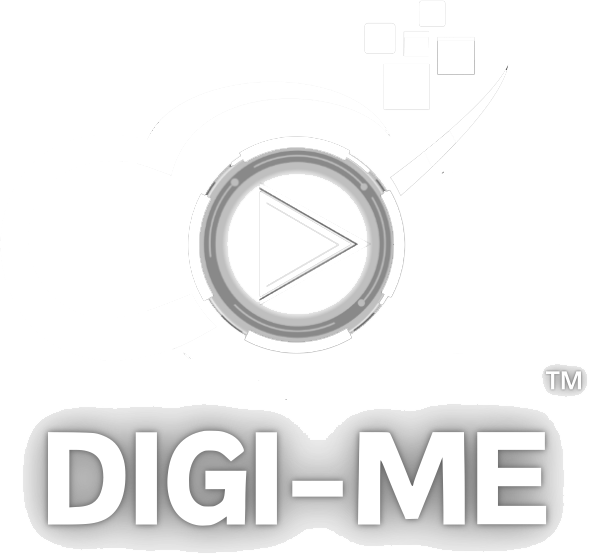If you want the best employees possible, you need to approach the process of getting them the right way! So, let’s go over maximizing your ROI with digital recruitment.
The Shift Toward Digital Recruitment
In recent years, the field of recruitment has witnessed a significant shift towards digital platforms. With the proliferation of online job boards and professional networking sites, companies can reach a wider talent pool more efficiently than ever. Digital recruitment offers numerous benefits, including cost-effectiveness, broader reach, and streamlined processes.
However, it’s essential to acknowledge that this shift brings new challenges. One such challenge is creating inclusive job descriptions. While digital recruitment has the potential to increase diversity and inclusivity in the hiring process, it is crucial to ensure that job descriptions are crafted in a way that attracts a diverse pool of people. So, it requires careful consideration of language, avoiding biased terminology, and promoting a welcoming and inclusive work environment.
Building an Effective Employer Brand
Building a compelling employer brand is paramount in maximizing your ROI with digital recruitment. An employer brand represents an organization’s reputation, values, culture, and overall employee experience. So, a strong employer brand helps create a positive perception among job seekers and motivates them to choose your company over others.
To build a compelling employer brand, define your organization’s unique value proposition and core values. Then, utilize digital platforms such as company websites, social media, and employee testimonials to showcase your company’s culture, benefits, and growth opportunities.
Finally, engage with your current employees, and encourage them to become brand advocates. Ask them to share their positive experiences.
Just remember, consistency is vital. So, ensure your employer brand aligns with your company’s employee experience.
Leveraging Social Media Platforms
Regarding recruitment, social media platforms offer a treasure trove of opportunities to connect with potential candidates and showcase your employer brand. After all, as the experts from Convert More point out, social media is helpful for much more than just driving conversion or updating your current customer base! With billions of active users on Instagram, Facebook, LinkedIn, and Twitter, social media provides an extensive reach to a massive talent pool.
You can leverage these platforms to create engaging content, share job postings, and promote your company culture. So, engage with your audience by promptly responding to comments and messages, fostering a sense of connection and interest. Moreover, social media allows you to target specific demographics, ensuring your hiring efforts are directed toward the right people.
Optimizing Job Postings for Increased Visibility
Optimizing job postings for increased visibility is crucial for maximizing your ROI with digital recruitment, and this is especially true for small businesses looking for freelancers. So, when crafting job postings, consider using relevant keywords, job titles, and industry-specific terms that applicants will likely search for. Tailor the content to highlight your organization’s key responsibilities, qualifications, and unique perks or benefits.
Additionally, make sure to include location information if the position is location-based. Then, enhance the visibility of your job postings by utilizing popular job boards, freelance platforms, and social media channels.
Finally, leverage SEO techniques to improve search engine rankings and increase organic traffic to your job postings. You should also monitor the performance of your job postings regularly and adjust based on analytics and applicant feedback!
Utilizing Data and Analytics
Data and analytics are instrumental in optimizing recruitment solutions and getting the best results. That is because leveraging data-driven insights allows organizations to make the best hiring decisions. Analyzing recruitment metrics, such as application rates, source effectiveness, and time-to-fill, also provides valuable information on the success of various strategies. With these insights, recruiters can identify areas of improvement and refine their approach.
Additionally, data and analytics enable the identification of trends and patterns, allowing businesses to predict future hiring needs and proactively plan their talent acquisition strategies.
Then, by tracking candidate behavior and engagement metrics, recruiters can personalize their communication and create a more personalized candidate experience. Furthermore, data analysis helps measure recruitment efforts’ return on investment (ROI), enabling organizations to allocate resources effectively and optimize budget allocation.
Implementing an Effective Applicant Tracking System (ATS)
Implementing an effective Applicant Tracking System (ATS) is crucial for efficient recruitment processes. An ATS automates and streamlines various stages of the hiring process, from receiving and sorting applications to managing applicant communication and tracking their data. With an ATS, businesses can centralize applicant information, quickly search and filter resumes, and collaborate with hiring teams seamlessly.
It also enables the creation of customized workflows, ensuring consistency and compliance in the hiring process. Moreover, an ATS improves the experience for applicants by providing immediate updates and personalized communication.
It simplifies scheduling interviews, sending automated email notifications, and collecting feedback. Additionally, an ATS generates insightful reports and analytics, allowing businesses to evaluate the effectiveness of their recruitment strategies.
Engaging Passive Candidates
Engaging passive candidates is a strategic approach to tap into a pool of talented individuals not actively seeking new job opportunities. Building relationships and showcasing your organization’s unique aspects is essential to attract passive candidates. Personalized outreach is vital, as it allows you to highlight how their skills and experiences align with your company’s goals and values.
Leveraging social media platforms, professional networking events, and industry-specific forums can help create awareness and initiate conversations with them. Furthermore, providing valuable content, such as thought leadership articles or industry insights, can pique their interest and establish your organization as a thought leader. Another effective tactic is to offer exclusive opportunities, like attending industry conferences or participating in webinars.
Leveraging Video Interviews and Assessments
Leveraging video interviews and assessments is an effective way of maximizing your ROI with digital recruitment. After all, video interviews allow businesses to connect with applicants remotely, saving time and resources associated with traditional in-person interviews. It also will enable candidates to assess their communication skills, professionalism, and cultural fit.
Additionally, video assessments enable businesses to evaluate candidates’ technical skills and problem-solving abilities through practical exercises or coding challenges. Moreover, these assessments can be quickly recorded, reviewed, and shared among hiring teams for collaborative decision-making. So, video interviews and assessments offer flexibility to recruiters and candidates, accommodating different time zones and schedules.
It eliminates geographical limitations, allowing organizations to access a wider talent pool. However, it’s crucial to establish clear guidelines, ensure a smooth interview process, and provide the necessary technical support.
Collaboration Between HR and Marketing Teams
Collaboration between HR and marketing teams is essential for a successful recruitment strategy. These teams can effectively align their efforts to attract top talent and promote the employer brand by working together. HR brings expertise in understanding the hiring needs, identifying target candidate profiles, and crafting compelling job descriptions.
On the other hand, marketing professionals excel in brand positioning, creating engaging content, and utilizing various marketing channels. So, by combining their strengths, HR and marketing teams can develop cohesive campaigns that resonate with the desired talent pool.
Leveraging Artificial Intelligence in Recruitment
Leveraging artificial intelligence (AI) in recruitment is revolutionizing the hiring process. AI-powered tools and algorithms can efficiently analyze large volumes of data, helping screen resumes, match candidates to job requirements, and identify top talent.
With AI, repetitive tasks such as resume screening can be automated, saving time. AI algorithms can also objectively assess candidate skills and qualifications, minimizing human selection bias. AI-powered chatbots can engage with candidates, answer frequently asked questions, and provide personalized assistance throughout the application process.
Furthermore, AI can predict candidate success by analyzing historical data and performance indicators, improving the accuracy of hiring decisions. However, ethical considerations must be considered when using AI in recruitment to ensure fairness and mitigate potential biases!
Making the Most of Maximizing Your ROI With Digital Recruitment
With everything we covered on maximizing your ROI with digital recruitment, we know you understand the process much better! Now, you are firmly positioned to take advantage of everything this new approach offers. So, don’t hesitate to do just that and boost your business!
The Shift Toward Digital Recruitment
In recent years, the field of recruitment has witnessed a significant shift towards digital platforms. With the proliferation of online job boards and professional networking sites, companies can reach a wider talent pool more efficiently than ever. Digital recruitment offers numerous benefits, including cost-effectiveness, broader reach, and streamlined processes.
However, it’s essential to acknowledge that this shift brings new challenges. One such challenge is creating inclusive job descriptions. While digital recruitment has the potential to increase diversity and inclusivity in the hiring process, it is crucial to ensure that job descriptions are crafted in a way that attracts a diverse pool of people. So, it requires careful consideration of language, avoiding biased terminology, and promoting a welcoming and inclusive work environment.
Building an Effective Employer Brand
Building a compelling employer brand is paramount in maximizing your ROI with digital recruitment. An employer brand represents an organization’s reputation, values, culture, and overall employee experience. So, a strong employer brand helps create a positive perception among job seekers and motivates them to choose your company over others.
To build a compelling employer brand, define your organization’s unique value proposition and core values. Then, utilize digital platforms such as company websites, social media, and employee testimonials to showcase your company’s culture, benefits, and growth opportunities.
Finally, engage with your current employees, and encourage them to become brand advocates. Ask them to share their positive experiences.
Just remember, consistency is vital. So, ensure your employer brand aligns with your company’s employee experience.
Leveraging Social Media Platforms
Regarding recruitment, social media platforms offer a treasure trove of opportunities to connect with potential candidates and showcase your employer brand. After all, as the experts from Convert More point out, social media is helpful for much more than just driving conversion or updating your current customer base! With billions of active users on Instagram, Facebook, LinkedIn, and Twitter, social media provides an extensive reach to a massive talent pool.
You can leverage these platforms to create engaging content, share job postings, and promote your company culture. So, engage with your audience by promptly responding to comments and messages, fostering a sense of connection and interest. Moreover, social media allows you to target specific demographics, ensuring your hiring efforts are directed toward the right people.
Optimizing Job Postings for Increased Visibility
Optimizing job postings for increased visibility is crucial for maximizing your ROI with digital recruitment, and this is especially true for small businesses looking for freelancers. So, when crafting job postings, consider using relevant keywords, job titles, and industry-specific terms that applicants will likely search for. Tailor the content to highlight your organization’s key responsibilities, qualifications, and unique perks or benefits.
Additionally, make sure to include location information if the position is location-based. Then, enhance the visibility of your job postings by utilizing popular job boards, freelance platforms, and social media channels.
Finally, leverage SEO techniques to improve search engine rankings and increase organic traffic to your job postings. You should also monitor the performance of your job postings regularly and adjust based on analytics and applicant feedback!
Utilizing Data and Analytics
Data and analytics are instrumental in optimizing recruitment solutions and getting the best results. That is because leveraging data-driven insights allows organizations to make the best hiring decisions. Analyzing recruitment metrics, such as application rates, source effectiveness, and time-to-fill, also provides valuable information on the success of various strategies. With these insights, recruiters can identify areas of improvement and refine their approach.
Additionally, data and analytics enable the identification of trends and patterns, allowing businesses to predict future hiring needs and proactively plan their talent acquisition strategies.
Then, by tracking candidate behavior and engagement metrics, recruiters can personalize their communication and create a more personalized candidate experience. Furthermore, data analysis helps measure recruitment efforts’ return on investment (ROI), enabling organizations to allocate resources effectively and optimize budget allocation.
Implementing an Effective Applicant Tracking System (ATS)
Implementing an effective Applicant Tracking System (ATS) is crucial for efficient recruitment processes. An ATS automates and streamlines various stages of the hiring process, from receiving and sorting applications to managing applicant communication and tracking their data. With an ATS, businesses can centralize applicant information, quickly search and filter resumes, and collaborate with hiring teams seamlessly.
It also enables the creation of customized workflows, ensuring consistency and compliance in the hiring process. Moreover, an ATS improves the experience for applicants by providing immediate updates and personalized communication.
It simplifies scheduling interviews, sending automated email notifications, and collecting feedback. Additionally, an ATS generates insightful reports and analytics, allowing businesses to evaluate the effectiveness of their recruitment strategies.
Engaging Passive Candidates
Engaging passive candidates is a strategic approach to tap into a pool of talented individuals not actively seeking new job opportunities. Building relationships and showcasing your organization’s unique aspects is essential to attract passive candidates. Personalized outreach is vital, as it allows you to highlight how their skills and experiences align with your company’s goals and values.
Leveraging social media platforms, professional networking events, and industry-specific forums can help create awareness and initiate conversations with them. Furthermore, providing valuable content, such as thought leadership articles or industry insights, can pique their interest and establish your organization as a thought leader. Another effective tactic is to offer exclusive opportunities, like attending industry conferences or participating in webinars.
Leveraging Video Interviews and Assessments
Leveraging video interviews and assessments is an effective way of maximizing your ROI with digital recruitment. After all, video interviews allow businesses to connect with applicants remotely, saving time and resources associated with traditional in-person interviews. It also will enable candidates to assess their communication skills, professionalism, and cultural fit.
Additionally, video assessments enable businesses to evaluate candidates’ technical skills and problem-solving abilities through practical exercises or coding challenges. Moreover, these assessments can be quickly recorded, reviewed, and shared among hiring teams for collaborative decision-making. So, video interviews and assessments offer flexibility to recruiters and candidates, accommodating different time zones and schedules.
It eliminates geographical limitations, allowing organizations to access a wider talent pool. However, it’s crucial to establish clear guidelines, ensure a smooth interview process, and provide the necessary technical support.
Collaboration Between HR and Marketing Teams
Collaboration between HR and marketing teams is essential for a successful recruitment strategy. These teams can effectively align their efforts to attract top talent and promote the employer brand by working together. HR brings expertise in understanding the hiring needs, identifying target candidate profiles, and crafting compelling job descriptions.
On the other hand, marketing professionals excel in brand positioning, creating engaging content, and utilizing various marketing channels. So, by combining their strengths, HR and marketing teams can develop cohesive campaigns that resonate with the desired talent pool.
Leveraging Artificial Intelligence in Recruitment
Leveraging artificial intelligence (AI) in recruitment is revolutionizing the hiring process. AI-powered tools and algorithms can efficiently analyze large volumes of data, helping screen resumes, match candidates to job requirements, and identify top talent.
With AI, repetitive tasks such as resume screening can be automated, saving time. AI algorithms can also objectively assess candidate skills and qualifications, minimizing human selection bias. AI-powered chatbots can engage with candidates, answer frequently asked questions, and provide personalized assistance throughout the application process.
Furthermore, AI can predict candidate success by analyzing historical data and performance indicators, improving the accuracy of hiring decisions. However, ethical considerations must be considered when using AI in recruitment to ensure fairness and mitigate potential biases!
Making the Most of Maximizing Your ROI With Digital Recruitment
With everything we covered on maximizing your ROI with digital recruitment, we know you understand the process much better! Now, you are firmly positioned to take advantage of everything this new approach offers. So, don’t hesitate to do just that and boost your business!







